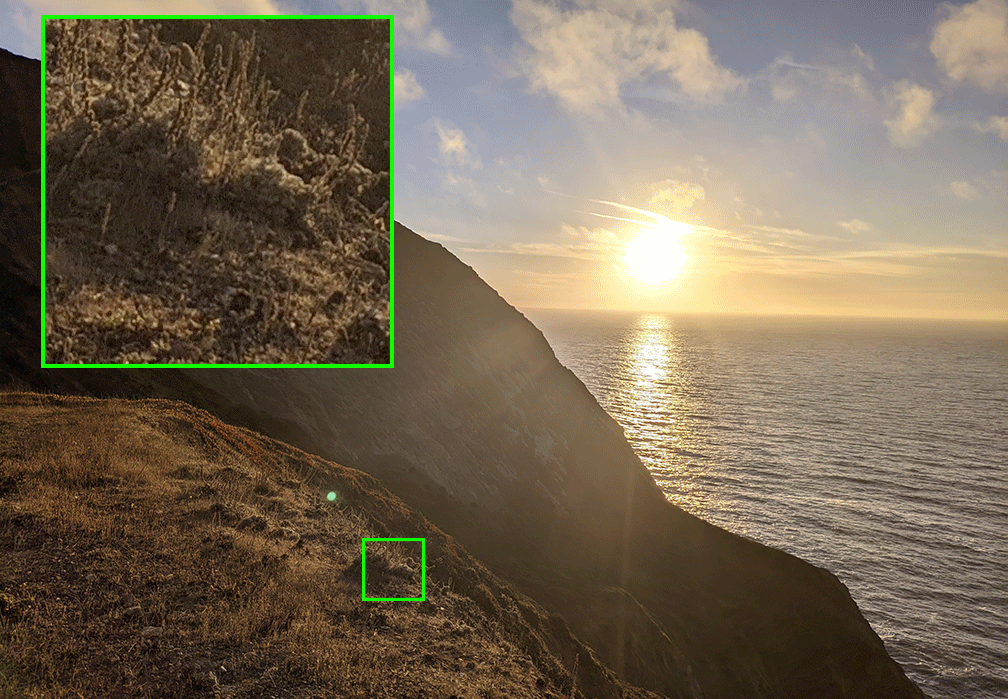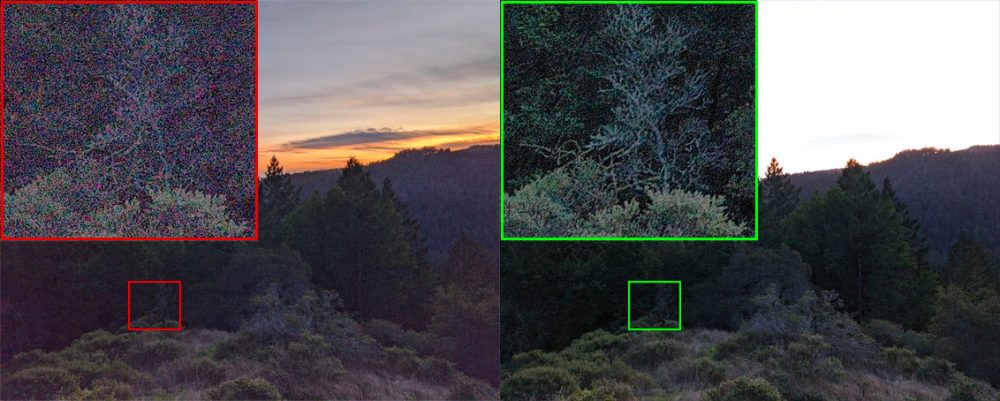
Besides an ultrawide lens, the Pixel 5 and 4a 5G added HDR+ with Bracketing to improve image quality in shadows, among other benefits. Google today detailed the technology behind that new capability while also revealing that the Pixel 4 and 4a now use bracketing in Night Sight.
At the Launch Night In keynote, the company called exposure bracketing a “serious upgrade” for HDR+ that “mix[ed] Google novel techniques with traditional HDR techniques.” It addresses how Google’s original HDR+ burst photography system — which “deliberately underexposed images” to avoid loss of detail in highlights — results in noisy shadows for high dynamic range scenes.
Capturing HDR scenes is difficult because of the physical constraints of image sensors combined with limited signal in the shadows. We can correctly expose either the shadows or the highlights, but not both at the same time.
The traditional solution to this involves taking two different exposures and combining them, but this is challenging for computational photography and requires:
- Capturing additional long exposure frames while maintaining the fast, predictable capture experience of the Pixel camera.
- Taking advantage of long exposure frames while avoiding ghosting artifacts caused by motion between frames.

To achieve bracketing, Google redesigned the “capture strategy” while being mindful of zero shutter lag, where “the frames displayed in the viewfinder before the shutter press are the frames we use for HDR+ burst merging.”
For bracketing, we capture an additional long exposure frame after the shutter press, which is not shown in the viewfinder. Note that holding the camera still for half a second after the shutter press to accommodate the long exposure can help improve image quality, even with a typical amount of handshake.
This is not a problem in Night Sight and one reason Google was able to bring exposure bracketing to Night Sight on the Pixel 4 and 4a. Instead of just 15 short exposure frames (top row), Night Sight with bracketing captures 12 short and 3 long exposures (bottom).

On the Pixel 4a 5G and 5, HDR+ with Bracketing is also available in the default camera and Portrait Mode:
No user interaction is needed to activate HDR+ with Bracketing — depending on the dynamic range of the scene, and the presence of motion, HDR+ with bracketing chooses the best exposures to maximize image quality (examples).

Left: The result of merging 12 short-exposure frames in Night Sight mode. Right: A single frame whose exposure time is 12 times longer than an individual short exposure. The longer exposure has significantly less noise in the shadows but sacrifices the highlights.
Author: Abner Li
Source: 9TO5Google



